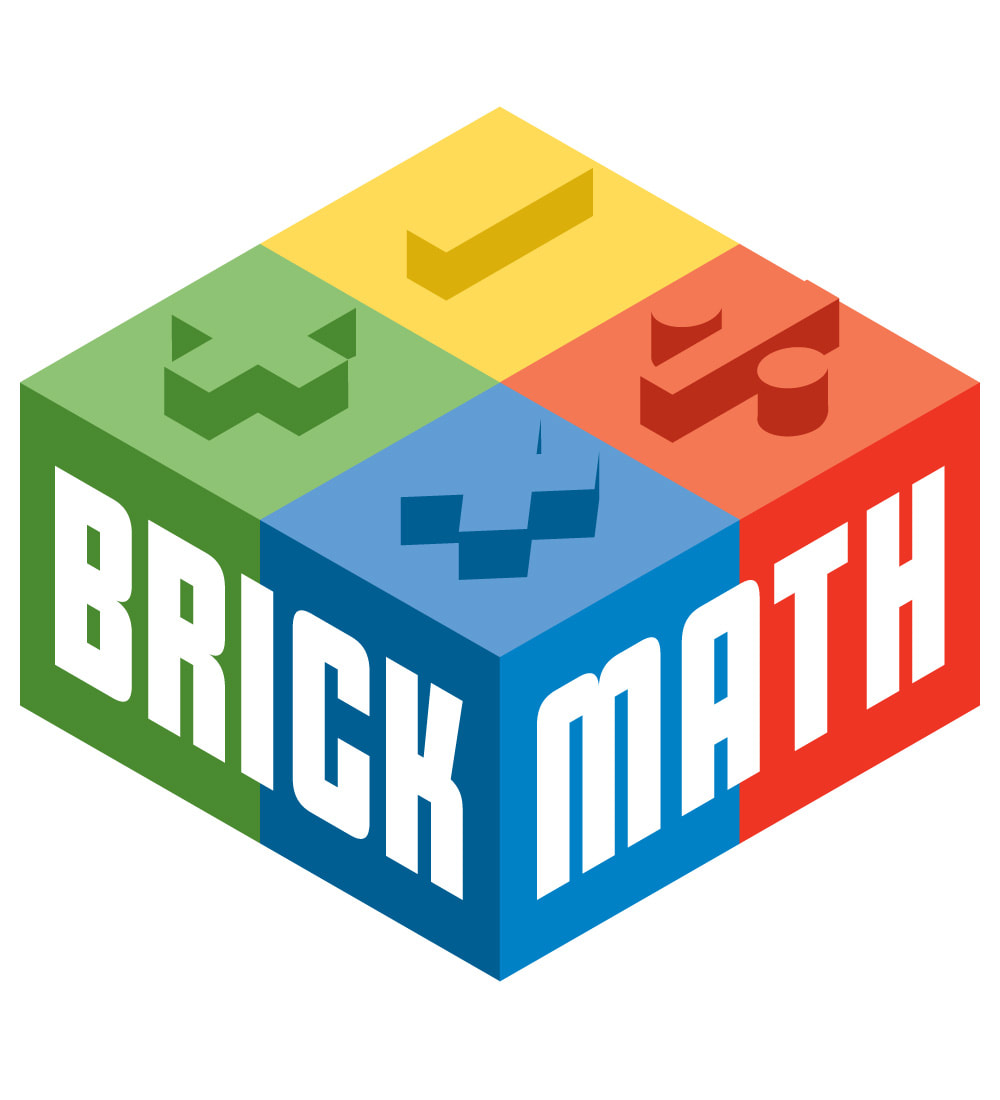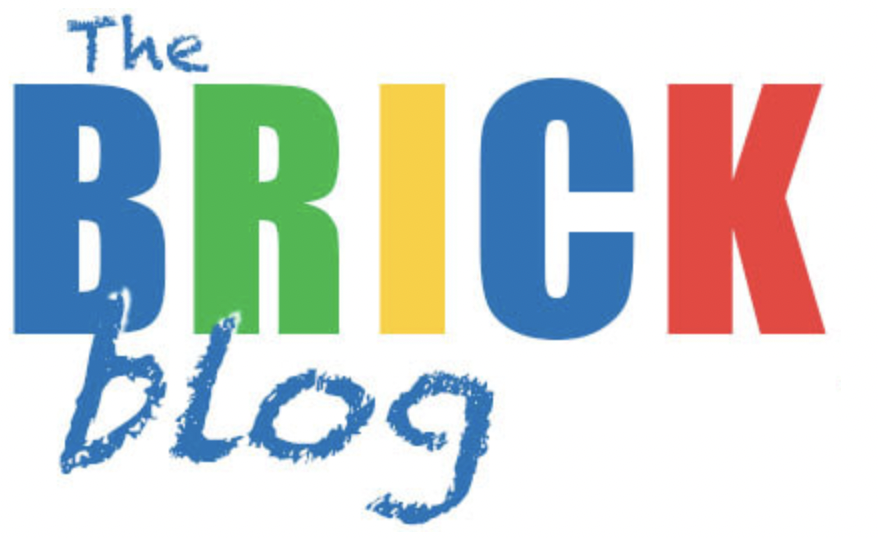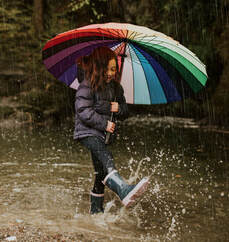 Image by rawpixel.com on Freepik Image by rawpixel.com on Freepik "April showers bring May flowers." April's Lesson of the Month on Decomposing Numbers in Addition brings May's Lesson of the Month on...Decomposing Numbers in Subtraction! To get the May 2023 Brick Math Lesson of the Month, "Decomposing Numbers / Place Value," plus a new lesson each month, click here. Each Lesson of the Month includes the Teacher Lesson Guide as well as the Student Workbook pages that correspond to the lesson. 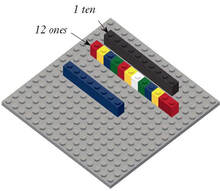 This lesson, from Brick Math's Subtraction Using LEGO® Bricks, models decomposing one ten into ten ones for the purpose of solving a subtraction problem. It also helps students understand the concept of place value, clearly showing bricks that represent both the tens and the ones places. It's a great way to explain what it actually means to subtract 8 from 22, which can be a difficult idea for some students to grasp when they start learning to subtract. 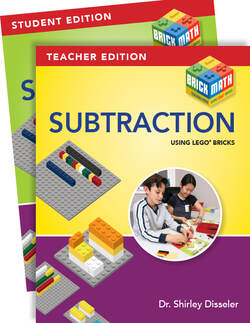 Brick Math is a K-6 math curriculum that uses LEGO® bricks to model 11 different math subjects: Counting, Addition, Subtraction, Multiplication, Division, Basic Fractions, Basic Measurement, Fraction Multiplication, Fraction Division, Advanced Measurement and Geometry, and Decimals. This year, the program will expand to include grades 6 - 8, with the additional subjects Data and Statistics, Pre-Algebra, and Ratios and Proportions. Brick Math works in many applications: for homeschooling, math intervention, enrichment, and as a whole-school program. Materials are simple and affordable. 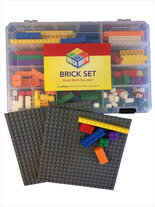 If you are a math teacher or a parent with a student at home who is learning K-8th grade math, check brickmath.com. The website includes videos for both teacher training and direct instruction of students. You can learn more about how Brick Math improves students' math test scores and hear what people who are using Brick Math have to say about the program.
0 Comments
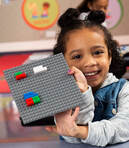 The Brick Math Free Lesson of the Month for April 2023 comes from the book Addition Using Lego® Bricks. It's a great way to show young learners the meaning of ones and tens, and how to transform 10 ones into 1 ten. To get the April 2023 Brick Math Lesson of the Month, "Decomposing Numbers," plus a new lesson each month, click here. 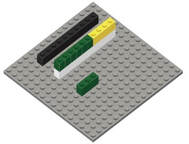 This concept is foundational to mathematics, and will appear again and again as students learn about place value throughout the elementary and middle school math curriculum. This simple method of showing how to decompose from ones to tens using LEGO® bricks will help every student fully grasp the concept. 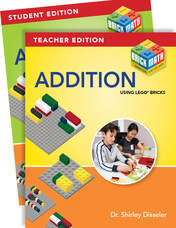 Brick Math is a K-6 math curriculum that uses LEGO® bricks to model 11 different math subjects: Counting, Addition, Subtraction, Multiplication, Division, Basic Fractions, Basic Measurement, Fraction Multiplication, Fraction Division, Advanced Measurement and Geometry, and Decimals. This year, the program will expand to include grades 6 - 8, with the additional subjects Data and Statistics, Pre-Algebra, and Ratios and Proportions. Brick Math works in many applications: for homeschooling, math intervention, enrichment, and as a whole-school program. Materials are simple and affordable. 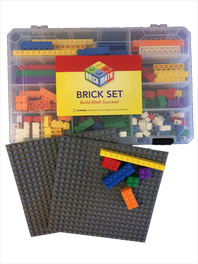 If you are a math teacher or a parent with a student at home who is learning K-8th grade math, check brickmath.com. The website includes videos for both teacher training and direct instruction of students. You can learn more about how Brick Math improves students' math test scores and hear what people who are using Brick Math have to say about the program. 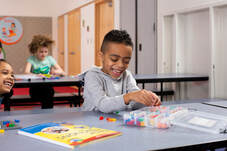 This is the time of year schools start planning for their summer programs. We’ve been busy lately, responding to school districts planning to use the Brick Math curriculum this summer. 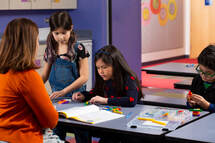 Brick Math is the perfect way to engage struggling students in math summer school. Naturally, students enjoy using the bricks as math manipulatives. But even more importantly, Brick Math is a modular program that targets specific math skills. Students learn using different methods than other math programs, and experience shows that they respond very positively to the hands-on program. 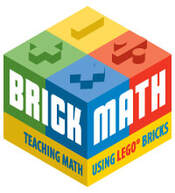 Brick Math offers free curricula of summer programs for each of the 11 subject areas for schools who choose Brick Math as their summer school curriculum. These programs can be easily adapted to your school’s schedule. To view a sample of Brick Math’s summer program, click here. The sample shows Day 1 of a 12-day summer program for Basic Fractions. 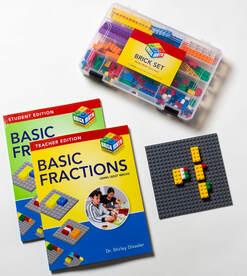 The 11 Brick Math topics include: Brick Math has been shown to increase students’ test scores significantly. Students gain a real understanding of the reasons why behind the math when they learn with Brick Math.
Please call 802-751-8002 or email us if you'd like to learn more about how to use Brick Math in your school's summer program. 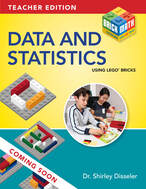 This Brick Math Lesson of the Month is from a new book not yet out — Data and Statistics Using LEGO® Bricks. The book will be published this spring as part of the expansion of the Brick Math curriculum into grades 6 - 8. To get the March 2023 Brick Math Lesson of the Month, "Representing Data," plus a new lesson each month, click here. 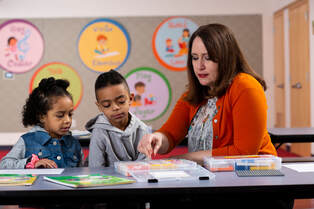 This lesson is the first one you'll use to teach students what data sets are and how to represent them graphically and with bricks. This is part of the K-2 math curriculum in most schools. The lesson introduces the terms data point, data set, and analyze, which are all important vocabulary words to understand when learning about data. The lesson uses three different colors of bricks to represent attributes of the data, and it uses the studs on the bricks to track the number of data points within each category of data. 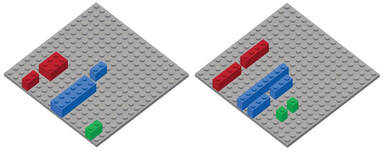 The lesson also connects to the math symbols <, >, and = . As soon as they are introduced to the subject, students learn to analyze data both in words and through math sentences. Brick Math is a K-6 math curriculum that uses LEGO® bricks to model 11 different math subjects:
Counting, Addition, Subtraction, Multiplication, Division, Basic Fractions, Basic Measurement, Fraction Multiplication, Fraction Division, Advanced Measurement and Geometry, and Decimals. This year, the program will expand to include grades 6 - 8, with the additional subjects Data and Statistics, Pre-Algebra, and Ratios and Proportions. Brick Math works in many applications: for homeschooling, math intervention, enrichment, and as a whole-school program. Materials are simple and affordable. If you are a math teacher or a parent with a student at home who is learning K - 8th grade math, check brickmath.com. The website includes videos for both teacher training and direct instruction of students. You can learn more about how Brick Math improves students' math test scores and hear what people who are using Brick Math have to say about the program. 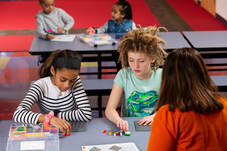 February's Lesson of the Month is on multiplying unit fractions by fractions. Unit fractions are those that have a 1 in the numerator. This lesson shows how to model the multiplication of any unit fraction by any other fraction. It's key to understanding what it actually means to multiply fractions together. The lesson is from Brick Math's Fraction Multiplication Using LEGO® Bricks. To get the February 2023 Brick Math Lesson of the Month, "Multiplying Unit Fractions by Fractions," plus a new lesson each month, click here. 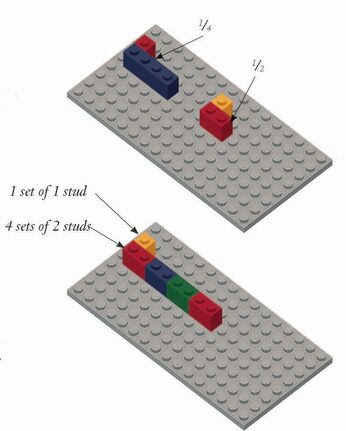 The lesson starts with a discussion of the term unit fraction, along with a discussion about how to determine which unit fraction is largest: 1/2, 1/3, or 1/4. The lesson then moves on to modeling two multiplication problems. Most 4th - 6th grade math teachers would agree that multiplying and dividing fractions is a very tricky subject for students to understand. The methods in Brick Math help make clear to students what is actually happening when two fractions are multiplied together -- not simply the process of multiplying the numerators and denominators together. This kind of deep understanding gives students a strong foundation in math that they can build on as they progress into middle school math and beyond. Brick Math is a K-6 math curriculum that uses LEGO® bricks to model 11 different math subjects: Counting, Addition, Subtraction, Multiplication, Division, Basic Fractions, Basic Measurement, Fraction Multiplication, Fraction Division, Advanced Measurement and Geometry, and Decimals. This year, the program will expand to include grades 6 - 8, with the additional subjects Data and Statistics, Pre-Algebra, and Ratios and Proportions. Brick Math works in many applications: for homeschooling, math intervention, enrichment, and as a whole-school program. Materials are simple and affordable.
If you are a math teacher or a parent with a student at home who is learning K - 6th grade math, check brickmath.com. The website includes videos for both teacher training and direct instruction of students. You can learn more about how Brick Math improves students' math test scores and hear what people who are using Brick Math have to say about the program.  Math scores for students across the US have declined since the start of the pandemic, according to the most recent National Assessment of Educational Progress (known as the “Nation’s Report Card”). For fourth graders, only 36 were found proficient in math. Even worse were the scores for eighth graders: only 26 percent proficient in math. The term “proficient” means that the students have demonstrate competency in the subject matter in their grade level. 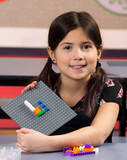 What does this mean for schools? Students need to focus on academic recovery. Students need to get back their math knowledge, and fast. Since math instruction builds on what students have previously learned, more and more students will be set back if they aren’t given the tools to catch up first. 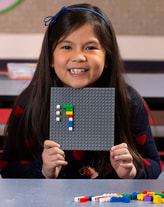 Brick Math is a perfect solution for schools, teachers, and parents who want to help their elementary and middle school students catch up in math. Brick Math teaches 11 subjects of basic math using LEGO® bricks. Modeling math with bricks helps students understand what the math means. The program is perfect for students who are struggling and haven’t learned through other teaching methods. It’s adaptable to all learning environments: whole-class instruction, small groups, and individual tutoring. 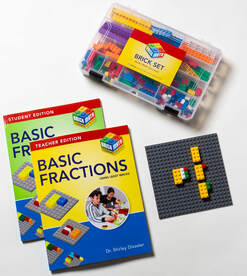 The school district of Davidson County, North Carolina, recently brought in Brick Math throughout the district to help bring their students back to levels of math proficiency. According to Dr. Deana Coley, Assistant Superintendent of Curriculum and Instruction for the district, “We asked our teachers which program students would have the most success with, and overwhelmingly, the teachers requested Brick Math.” 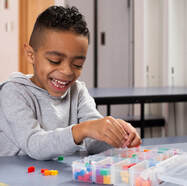 Brick Math is a K-6 math curriculum that uses LEGO® bricks to model 11 different math subjects: Counting, Addition, Subtraction, Multiplication, Division, Basic Fractions, Basic Measurement, Fraction Multiplication, Fraction Division, Advanced Measurement and Geometry, and Decimals. It works for math intervention, enrichment, as a whole-school program, and even homeschooling. Materials are simple and affordable. If you teach math or have a student at home who is learning K - 6th grade math, check brickmath.com. The website includes videos for both teacher training and direct instruction of students. You can learn more about how Brick Math improves students' math test scores and hear what people who are using Brick Math have to say about the program.
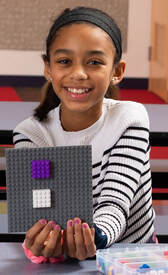 There are a number of recent research studies that assess the effects of online and hybrid learning during the past three pandemic-affected school years. The studies show that math scores have dropped considerably during this time, even more than reading. According to an Education Week article, students are 12 weeks behind where they should be in math – about four months, or one-third of a typical 36-week school year. 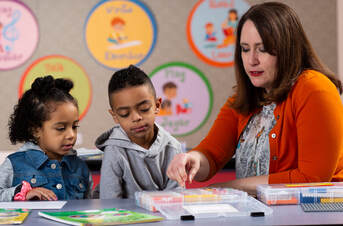 There is a lot of federal funding available for academic intervention and support to help kids catch up. Many experts recommend a multi-pronged approach to helping students get back on track: tutoring, after-school programs, summer school, and/or lengthening the school year. 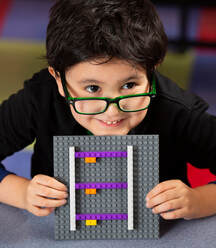 Brick Math is a very effective curriculum for math intervention and support in grades K – 6. The program teaches basic math by modeling with LEGO bricks, so the process is tactile, easy to understand, and fun! Brick Math is designed to work in different settings: whole-class, small group, and one-on-one. It is simple to adopt in any of the support approaches a school chooses, as a tutoring curriculum, or part of an after-school or summer program. 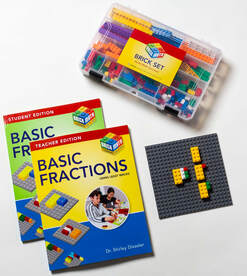 Recommendations also include the need for schools to implement their intervention strategies as soon as possible, and the funding timeline will help reinforce a speedy plan: schools have only two years to spend the money allocated to help students catch up. That's another plus for Brick Math -- the brick modeling techniques are easy for teachers to learn. There are only a few materials needed: a lesson book for the teacher, a student workbook for each student, and a brick set for every one or two students using the program. As schools try to get back to "normal" this year, the Brick Math curriculum can help bring your students back where they should be in math. 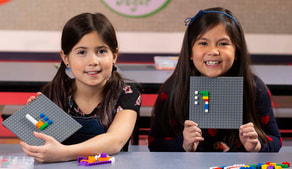 Brick Math is a K-6 math curriculum that uses LEGO® bricks to model 11 different math subjects: Counting, Addition, Subtraction, Multiplication, Division, Basic Fractions, Basic Measurement, Fraction Multiplication, Fraction Division, Advanced Measurement and Geometry, and Decimals. It works for homeschooling, math intervention, enrichment, and as a whole-school program. Materials are simple and affordable. If you teach math or have a student at home who is learning K - 6th grade math, check brickmath.com. The website includes videos for both teacher training and direct instruction of students. You can learn more about how Brick Math improves students' math test scores and hear what people who are using Brick Math have to say about the program. 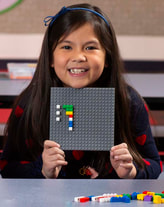 We get lots of questions from parents who want to try Brick Math with their children, either for homeschooling or as a fun supplement at home. They often ask how to determine where their child should start, what books to purchase, and what bricks to use. Here's a guide to getting started with Brick Math: Brick Math basics: Brick Math is based on teaching individual math subjects. The series starts with Counting and Cardinality, and works its way up to Advanced Measurement and Geometry. There are 11 subjects available that track the typical K - 6 curriculum. You can view all of them here: https://www.brickmathseries.com/products.html To get a sample lesson of any subject, click on the subject, click on any version of the book, then click "Download Sample Lesson" or "Look Inside!" 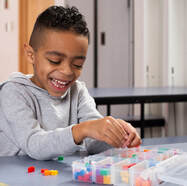 Determining what subjects to start with: If your child has already starting learning with another math curriculum, determine what he/she has mastered and move on from there. For example, the typical K-2nd grade curriculum includes Counting, Addition, and Subtraction, plus part of Basic Measurement (telling time). If your child has mastered those, move to the subjects that are typically in the 3rd-4th grade curriculum: Multiplication, Division, and Basic Fractions, plus most of Basic Measurement. Teacher and Student Editions: We suggest you buy the Teacher and Student Edition of each subject. You will use the Teacher Edition to guide your child through the lessons, and your child will use the Student Edition to draw their brick models, answer questions, and complete chapter assessments, so you will feel confident that they are ready to move on. Each child learning with Brick Math needs their own Student Edition. Print books or PDFs: Either version will work, but you will need to print out all the pages of the Student books for your child to write in. The books average about 80 pages in length. The books are in full color so the illustrations of the brick models are easy to understand. This is more important for the Teacher books, which include illustrations of the brick models you will make as teacher, and of the models you can expect your child to make. Since many people don’t have easy access to a color printer, or find color printing much more expensive, the print book may be a less expensive alternative to a PDF if you plan to print out most of the pages. 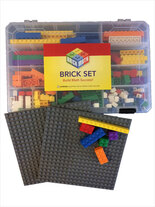 Bricks needed: You can use your own LEGO bricks if you have plenty of them, or you can buy our Brick Set, which includes all the bricks needed for the entire Brick Math program. Every chapter has a list of all the bricks you need for that chapter, and there is a suggested brick inventory for the whole program in each book and on our website at https://www.brickmathseries.com/uploads/7/1/0/2/7102647/brickinventory.pdf. More resources: The Brick Math website includes lots of videos to help you get comfortable with the program and see the Brick Math method being taught by the author of the series.
https://www.brickmathseries.com/videos.html For additional information, check the website section for parents/homeschool: https://www.brickmathseries.com/for-parentshomeschool.html 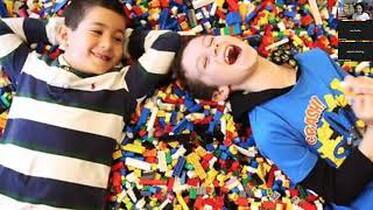 Many homeschool families are using Brick Math: Teaching Math Using LEGO® Bricks for the math curriculum for their children ages 5 – 12, or in grades K – 6. We recently gave a short virtual presentation about Brick Math to interested parents associated with the Heartwood Charter School, a public charter school for independent study in California. Watch the video to see how Brick Math works for homeschool families. If you homeschool your child and are looking for math curriculum, this video presentation about Brick Math shows you the materials, explains how you can get started, and gives a short demonstration of a lesson. You can check the website for more information about how Brick Math can work for you and your child. Please feel free to contact us if you have more questions about Brick Math as a homeschooling math curriculum.
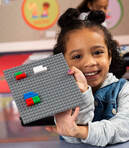 In the Brick Math program, students use LEGO bricks to learn elementary and middle school math. The bricks are also known as manipulatives—items that the students actually touch and move to model the math. How do manipulatives work in teaching math? There are three major ways that manipulatives help students learn: 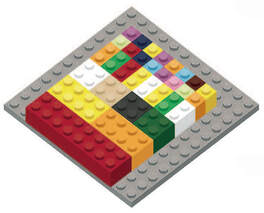 1. Manipulatives make math concrete. When you read math problems in a textbook, you are asked to envision abstract concepts—subtracting 5 from 7, or multiplying 10 by 3, for example. But using manipulatives to model a concept makes the math concrete and real. In our examples, use 7 bricks to model the number 7, then remove 5 of those bricks to see clearly that 2 are left. Or make 3 groups of 10 bricks each to model multiplication, to clearly show the solution as 30. Students “get” the math when they can see it! 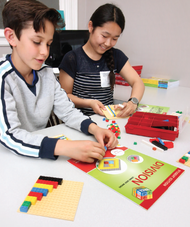 2. Manipulatives are tools to solve math problems. Engineers and scientists approach new problems by building models and testing their solutions. Manipulatives work the same way for math problems. When given a math problem, students use bricks to work through the problem. Different solutions can be tested and compared. 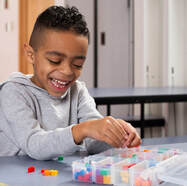 3. Manipulatives make math fun. Doesn’t the idea of doing math with LEGO bricks seem like a lot more fun than memorizing multiplication facts or doing long division with pencil and paper? Students and teachers across the globe agree! Teacher Sally Gray told us: "Instead of indoor recess with puzzles and games, my class begged to continue working on multiplication with Brick Math!" Using the beloved LEGO bricks as math manipulatives in a complete curriculum of K-6th grade math helps students build deep and lasting math ability. Brick Math is a K-6 math curriculum that uses LEGO® bricks to model 11 different math subjects: Counting, Addition, Subtraction, Multiplication, Division, Basic Fractions, Basic Measurement, Fraction Multiplication, Fraction Division, Advanced Measurement and Geometry, and Decimals. It works for homeschooling, math intervention, enrichment, and as a whole-school program. Materials are simple and affordable.
If you teach math or have a student at home who is learning K - 6th grade math, check brickmath.com. The website includes videos for both teacher training and direct instruction of students. You can learn more about how Brick Math improves students' math test scores and hear what people who are using Brick Math have to say about the program. |
Categories
All
Archives
April 2024
|

